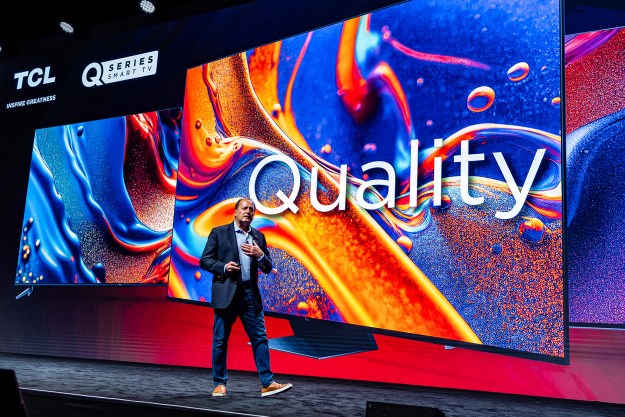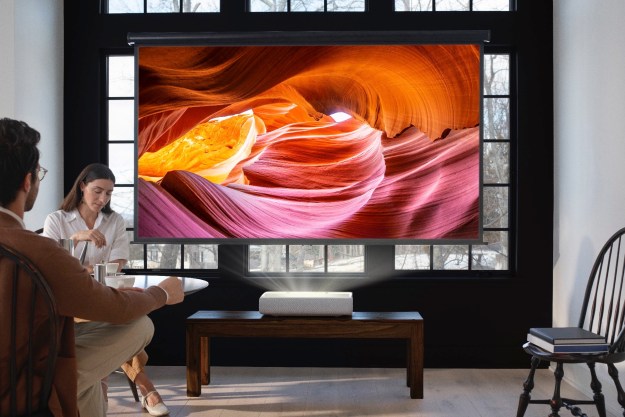Samsung has set loose its entire 2014 television line-up, and it’s pretty massive. We’ve waded through the details and distilled them down for you here.
While Samsung has a couple of novel televisions it has already shown off, including a bendable 85-inch Ultra HD (UHD) LED set and a super-wide 105-inch curved UHD LED, the company’s flagship production television is the 110-inch UHD TV in its S9 series. The massive set is an addition to the existing 85-inch set in the series.
Samsung has dubbed its curved UHD series U9000, with 55-, 65-, and 78-inch sizes available. Samsung says it has determined the optimal curve radius (4200R) for “typical viewing distances” of 3 to 4 meters. The series includes Samsung’s improved dimming technology for better contrast, and a proprietary upscaling chip to enhance SD and HD programs for display on the 4K panel. As is the case with all of Samsung’s UHD televisions, the U9000 series will come ready with H.265 (HEVC) devoding, HDMI 2.0, HDCP 2.2 compliance, and MHL 3.0. Also standard for all UHD TV’s is the inclusion of Samsung’s One Connect box, which houses the TV inputs, outputs and processing chips so that the TV can be upgraded at any time by swapping out the box. Samsung’s curved UHD TV’s can also all be wall mounted this year, something that can not be said for its competition.
If curved UHD TVs aren’t your thing, Samsung offers the U8550 series, which is comprised of 50-, 55-, 60-, 65- and 75-inch flat-panel models. The sets include most of the aforementioned features, and measure just 1.2 inches thick, with a 7mm sliver of a bezel.

Notable absent is any mention of new OLED models. Samsung will continue to offer the 55-inch S9C OLED model it debuted last year, but as far as we can tell, that is all. LG, on the other hand, is coming to CES 2014 with five new OLED models.
Finally, Samsung has upgraded its Smart Hub smart TV platform included in its UHD TVs this year. The system will be speedier thanks to an upgraded Quad-Core Plus processor, and it can now support a new Multi-Link feature, which enables users to place live TV side-by-side with other applications, such as YouTube, or a Web browser. In this way, browsing the Web will no longer require pulling out of a live TV feed.
Samsung has also changed its five-tab smart TV interface some, adding a multimedia tab as a catch-all for personal photos, movies and music and social applications. That consolidation opened up a tab, which Samsung filled with a new gaming panel. Details on the gaming side of things are scant. We are not sure at this time if it will be a cloud-based gaming platform, or if the TV will have enough processing power for watered-down versions of AAA titles, but the company does seem confident it will launch with about 20 games ready to go.
Finally, Samsung has extended its curved form factor to its top-level U8000-series 1080p LED sets. We can expect similar Smart TV features in these sets, as well as enhance LED backlighting and dimming technology. Further details on the 1080P HD LED line will have to wait until the doors open to the show floor.
Check back with Digital Trends often as we update our coverage on Samsung’s expansive TV lineup and bring you up-close video of its latest products.
Editors' Recommendations
- Samsung’s new 98-inch DU9000 4K TV is just $4,000. Can it beat TCL and Hisense?
- Hisense teases 110-inch, 10,000-nit TV ahead of CES 2024
- Samsung scales its Terrace outdoor TV to 85 inches with mini-LEDs
- Samsung S95C OLED hands-on review: it’s time to get excited
- Samsung accidentally reveals price of its 77-inch QD-OLED TV




